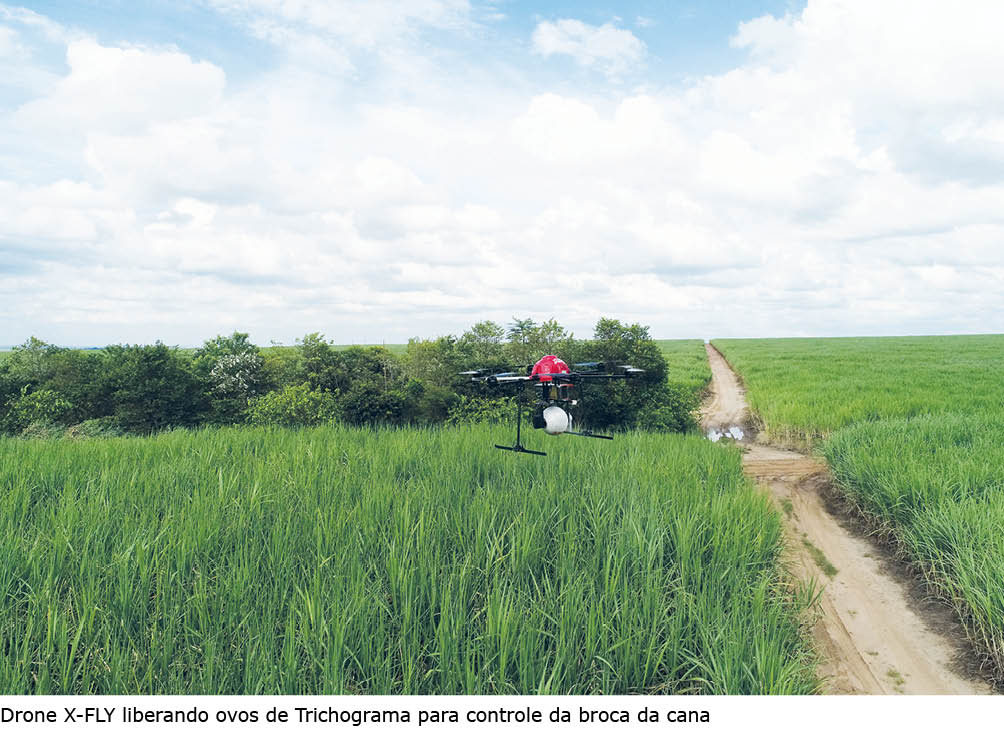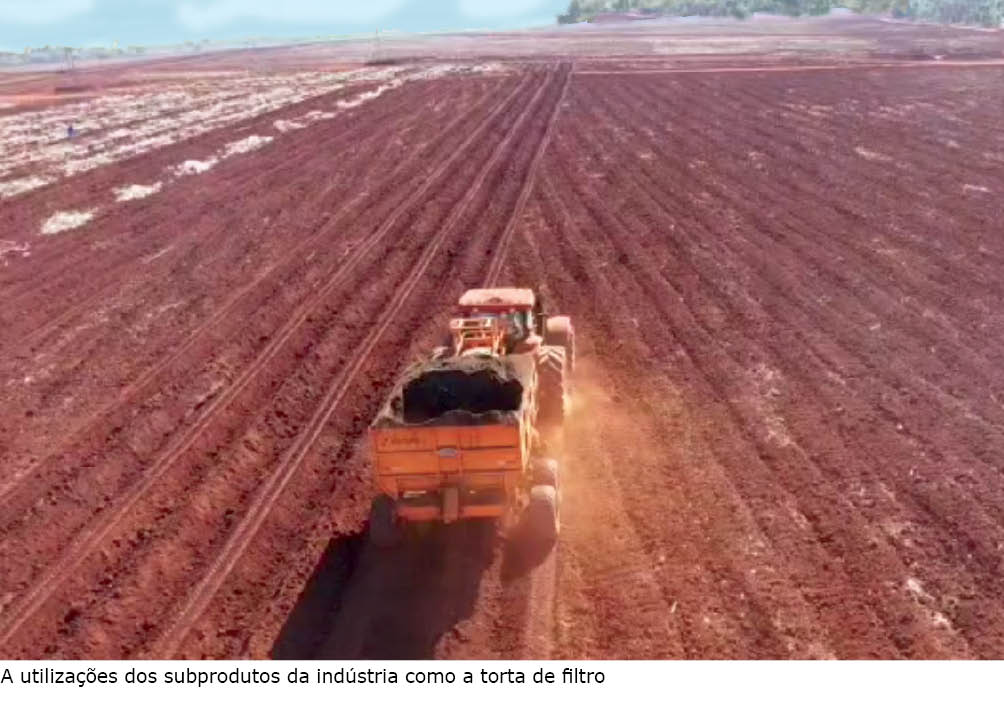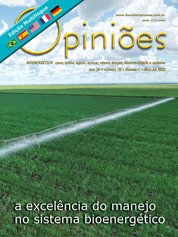Jorge Luiz Morelli
Produtor de cana-de-açúcar do Médio Tietê
OpAA76
Desafios do manejo
Há quase cinco séculos cultivada no Brasil, a cana-de-açúcar passou por ciclos muito distintos e marcantes, dos senhores de engenho aos usineiros, das empresas familiares aos conglomerados de capital aberto e, entre outras transformações, a da regulação do governo ao livre mercado. Nos últimos 48 anos, desde o início do Proálcool, ocorreram as grandes expansões de área e o avanço para outras regiões do Brasil além do sudeste e nordeste.
Com o manejo agrícola também não foi diferente, dado que a expansão exigiu significativas mudanças, que foram se concretizando por meio do desenvolvimento da pesquisa, das novas tecnologias e dos equipamentos e máquinas, os quais trouxeram a eficiência necessária para a nova realidade. Nesse período, várias usinas também se estruturaram para receber os campos experimentais de novos clones e variedades, e demais estudos com o objetivo de aprimorar seu manejo agrícola.
As novas variedades sempre significaram um grande impulso no manejo agrícola e na produtividade, seguidas pelo aprimoramento no uso dos insumos. No entanto, aqueles que já atingiram uma média igual ou maior que 100 toneladas de cana por hectare sabem o quanto é preciso fazer para eliminar os “ladrões” de produtividade. Todo o potencial que o emprego de variedades e insumos adequados representa, pode facilmente se esvair se faltar qualidade nas operações agrícolas, rigor na gestão do tempo e da época ideal de execução das atividades.
Aqueles que iniciaram sua carreira nas usinas ou como produtores de cana na era do Proálcool viveram o grande desafio de organizar as lavouras, os registros e os controles das informações agronômicas, além do desafio da busca de soluções de manejo agrícola num cenário de forte expansão, especialmente em solos arenosos de baixa fertilidade.


Foi, sem dúvida, um ciclo de geração de muito conhecimento e de formação de novos profissionais. Essa época deixou um legado muito importante para enfrentar uma nova realidade que estava por vir: a eliminação da queima da palha da cana e a colheita e o plantio mecanizados. Este é o novo ciclo que vivemos hoje, uma era da tecnologia sem fim: do GPS, do piloto automático, das imagens de satélites, dos softwares de gestão, dos equipamentos de monitoramento das operações, dos drones, das máquinas autônomas, entre outras tantas, vão surgindo de forma acelerada.
É nesse cenário profuso de recursos tecnológicos que o manejo agrícola precisa estar inserido para atingir a tão sonhada produtividade de três dígitos, fundamental para manter os custos num patamar de sustentabilidade. As práticas agrícolas precisam ser revisadas constantemente para atenderem as exigências do mercado e os anseios da sociedade. Muito além das questões trabalhistas e socioambientais, as certificações para posicionar os produtos nos melhores mercados se aprimoram o tempo todo e exigências, como a rastreabilidade, permeiam normalmente nas cadeias produtivas. Num ambiente em que não há retrocesso, abordaremos a seguir alguns conceitos técnicos do manejo agrícola.
Para a nutrição da cana-de-açúcar, do preparo do solo aos tratos de soqueira, permanece válida a lei de Liebig (1850) pela qual a produtividade é limitada pelo elemento cuja concentração seja inferior ao mínimo demandado pela cultura. Contudo, a oferta de insumos e tecnologias se multiplicou tanto nos últimos anos, que, sem um ajuste fino, haverá o risco de desperdício de tempo e recursos.
Muito além de trabalhar com os resultados das análises de solo e com os cálculos de reposição dos nutrientes extraídos pela cultura, é imperativo adotar práticas agrícolas que contribuam para preservar o solo como um ambiente favorável ao enraizamento da cana e ao incremento da vida microbiana. É também fundamental agregar nutrientes via fontes de matéria orgânica, rotação de culturas e proteção do solo com algum tipo de cobertura vegetal. A rotação de culturas, além da possibilidade de receita adicional, significa um grande benefício sob o ponto de vista agronômico, seja no aspecto nutricional, na desinfestação de pragas e plantas daninhas e, também, na conservação do solo graças à cobertura vegetal no período mais chuvoso.
A presença da palha, que se acumula e, também, se decompõe a cada ano, traz os benefícios da retenção da água no solo e da ciclagem de nutrientes. Em algumas regiões, ela pode retardar a brotação das soqueiras, mas existe a solução de removê-la para as entrelinhas, deixando livre as linhas de cana. Serve também de abrigo para algumas pragas importantes, como a cigarrinha das raízes e a broca da cana, mas também para os inimigos naturais. Outras pragas, como o sphenophorus, metamasius e migdolus, de alguma forma, também têm se beneficiado desse novo ambiente. Quanto aos nematoides, há muito tempo se estabeleceu o controle baseado nas amostragens, na identificação de espécies e na população.
Para todas essas pragas citadas, há soluções inovadoras, mesmo que algumas ainda requeiram um ganho de eficiência de controle, como no caso do sphenophorus e outras, como os defensivos biológicos, já se encontram totalmente adequadas à nova realidade. O controle biológico da broca da cana, a diatraea saccharallis, é o mais sedimentado. Há mais de 50 anos são criados inimigos naturais em laboratório e liberados no campo com o objetivo de incrementar o controle biológico natural existente. O uso de drones, relativamente recente, para a liberação de Cotesia e Trichograma, proporcionou um notável ganho de eficiência e qualidade.
As pragas que vivem no solo requerem também um manejo integrado de controle que inclua técnicas que reduzam sua população, como o uso do implemento erradicador de soqueiras no período seco e a rotação de culturas. Existem também para algumas delas os defensivos biológicos, como a beauveria e o metarhizium, que irão infestar as formas das pragas e se colonizar, permanecendo vivos nos anos seguintes. Nematicidas biológicos já são largamente utilizados no plantio e nos tratos de soqueira.
O controle das plantas daninhas também teve de se adaptar após a eliminação da queima da palha. Muitas espécies que raramente eram encontradas, especialmente as de folhas largas, hoje estão muito disseminadas e agressivas, como é o caso da mucuna, que além da feroz competição com a cana, traz sérias dificuldades à colheita mecanizada. Para a maioria das gramíneas, as soluções de controle são satisfatórias, o que não é o caso da grama seda, difícil de ser erradicada. De qualquer modo, continua valendo o manejo integrado, que prevê o uso de todas as práticas de prevenção para não disseminação das plantas daninhas e a desinfestação das áreas ao longo do ciclo, para chegar no plantio da cana ou das culturas de rotação com as áreas livres de mato.
São muitos os fatores que interferem no manejo agrícola, alguns imponderáveis, como o clima e outros que facilmente fogem ao controle. A conclusão é que, independentemente da condição climática, para continuar produzindo satisfatoriamente ao longo dos cortes, a lavoura de cana precisa ter população de colmos suficiente, pouquíssimas falhas, plantas com bom enraizamento e alta sanidade das folhas o maior tempo possível durante o ciclo; condições que nem mesmo os melhores insumos poderão garantir se não houver uma boa gestão da qualidade, precedida de um trabalho constante de capacitação dos colaboradores





